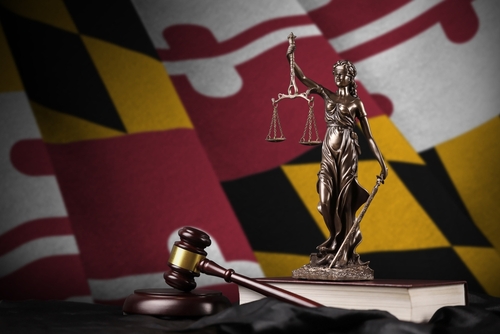Identifying the Source of Goods and Services Is No Laughing Matter | Warner Norcross + Judd
On June 8, 2023, the United States Supreme Court clarified an important unanswered question about the line between the First Amendment’s freedom of speech and trademark owners’ rights under the Lanham Act. In a unanimous, 9-0 decision in the closely watched case Jack Daniel’s Properties, Inc. v. VIP Products, LLC, the Supreme Court revived a lawsuit for trademark infringement and dilution filed by the owner of the world-famous Jack Daniel’s brand of whiskey. The outcome of the case establishes a new legal principle: When a company uses a trademark as a trademark — in other words, for the purpose of identifying the source of goods and services — neither the First Amendment nor the defense of “parody” shield that use from liability for infringing or diluting another party’s trademark.
A parody to the famous Jack Daniel’s Old No. 7 Tennessee Sour Mash Whiskey bottle stands at the center of this dispute. This design is so famous that Justice Kagan, who wrote the majority opinion, advised the reader to “retrieve a bottle from wherever you keep liquor; it’s probably there.” The bottle bears the distinctive registered trademarks JACK DANIEL’S and OLD NO. 7. The arched Jack Daniel’s logo, stylized label and shape of the bottle itself are also all registered trademarks.
The defendant in the case, VIP Products, is a dog toy company that sells “Silly Squeakers” toys designed to imitate and make fun of other famous brands. The BAD SPANIELS dog toy is one of them. This product mimics the Jack Daniel’s bottle, including its bottle shape, stylized label, and word marks. But it adds the image of a dog and replaces the original Jack Daniel’s text with dog-themed humor. Instead of “Old No. 7 Tennessee SOUR MASH WHISKEY,” the label reads “The Old No. 2 ON YOUR Tennessee CARPET.” And the small print at the bottom substitutes “43% POO BY VOL.” and “100% SMELLY” for “40% ALC. BY VOL. (80 PROOF).”
Jack Daniel’s sued VIP for (1) trademark infringement, a claim alleging use of BAD SPANIELS is likely to confuse customers about whether the product comes from the plaintiff and (2) trademark dilution, a statutory claim available to famous brands that prohibits others from using marks that would decrease the unique, source-identifying function of the plaintiff’s mark regardless of a customer’s likelihood of confusion.
The district court denied VIP’s summary judgment motions, and Jack Daniel’s won at a bench trial, where the judge reached the unremarkable conclusion that associating the plaintiff’s famous mark with “canine excrement” would cause Jack Daniel’s “reputational harm.”
On appeal, however, the United States Court of Appeals for the Ninth Circuit reversed the decision based on Rogers v. Grimaldi, 875 F. 2d 994, 999 (CA2 1989), a decision that found trademark law inapplicable to “expressive works.” Although it had never before been evaluated by the Supreme Court, courts routinely used the “Rogers test” to dismiss trademark claims about use of a mark in an expressive work unless the complainant can show one of two things: That the challenged use of a mark “has no artistic relevance to the underlying work” or that it “explicitly misleads as to the source or the content of the work.” The Rogers case itself rejected a claim brought by Ginger Rogers and Fred Astaire over a movie entitled “Ginger and Fred.” The characters in that movie imitated the two famous dancers, and the court held that the title was an artistic commentary rather than a misleading identification of goods or services. Applying Rogers to the BAD SPANIELS case, the Ninth Circuit held that Bad Spaniels was an “expressive” and “noncommercial” work — even though it was used on a retail product — because it “parodies” and “comments humorously” on Jack Daniel’s.
The Supreme Court unanimously reversed the Ninth’s Circuit’s decision. In so holding, it did not comment on the validity of the Rogers test in general, although both parties had urged it to do so. Rather, the Supreme Court limited itself to the situation at hand — that is, even assuming that Rogers is an accurate statement of the law in other circumstances, does it shield an alleged infringer from liability for selling products under a name that parodies another brand? The answer was a resounding “no.”
The Supreme Court reached this conclusion by sticking to the crux of trademark protection and the purpose of trademark law. A trademark is any symbol, word or other device used in commerce to identify the source of goods or services. Trademark law is designed to prevent customers from being confused about from where goods or services are coming. In short, trademark law protects customers from being duped by imitation goods and safeguards their ability to make informed choices. When a party’s trademark is close enough to another party’s mark that customers are no longer certain which of the parties is selling the good or service, trademark infringement exists.
But trademark rights are limited to this commercial context. They do not grant trademark owners ownership of the word or symbol in all circumstances. That would go too far in limiting the free speech guaranteed by the First Amendment, which is what the Rogers test was designed to protect. Plenty of cases have applied Rogers to reject trademark claims under circumstances in which a word or symbol that functions as a trademark is used in some other non-trademark way, such as the name of a book or movie, a song lyric, film dialogue or other expressive work.
Here, however, VIP used “BAD SPANIELS” as a trademark — that is, to indicate the source of its goods. Thus, the Supreme Court ruled, the mere fact that the mark also seeks to comment on another mark doesn’t exempt VIP from the same likelihood of a confusion test that all courts apply to determine whether one mark infringes another.
Justice Kagan did not dismiss the intended humor of the mark entirely; rather, she said “that kind of message matters in assessing confusion because consumers are not so likely to think that the maker of a mocked product is itself doing the mocking.” But that argument is more properly considered as one factor of the Lanham Act’s likelihood of confusion analysis, rather than as a free pass from liability.
This decision has trademark owners across the country breathing a deep sigh of relief. The internet already makes it easy to peddle knockoffs and debatably humorous imitations of famous products. Had this case come out differently, infringers would have been even more emboldened to use trademarks and trade dress nearly identical to all sorts of famous brands, and those brands would have been significantly handicapped in their ability to defend their goodwill. This decision strikes a healthy balance between safeguarding the ability of trademarks to perform their source-identifying function, while still leaving breathing room for legitimately non-confusing social commentary.
Indeed, if anything, the decision signals that the Supreme Court may one day go even farther in limiting the application of the First Amendment to trademarks. Three of the Supreme Court’s most conservative justices filed a concurring opinion signaling their skepticism that Rogers was rightly decided in the first place. That brief opinion expressly invites the lower courts to consider this view, meaning that we will certainly begin to see more challenges to the Rogers framework, and perhaps court rulings that further limit or discard it entirely. If that happens, what the new balance between trademark law and the First Amendment remains an open question.






